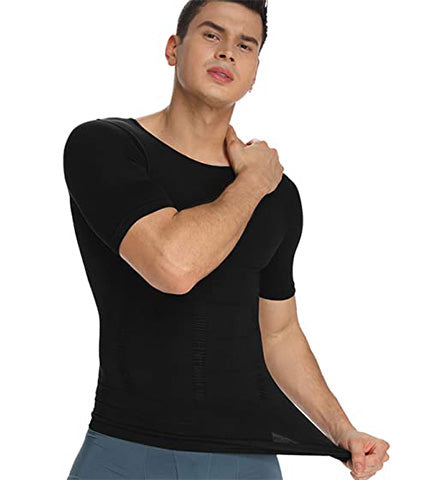Blog
Are FTM Binders Safe to Use?
Chest binding is a way for transmasc or non-conforming gender individuals to attain a more masculine look and help curb body dysphoria without FTM top surgery. For this reason, binders are a great asset for non-conforming gender individuals and trans people. That said, if you are new to binding and you are wondering if FTM binders are safe to use, then you've come to the right place. Here are a few things you should know about FTM binders.
Are FTM Binders Safe To Use?
One common question that people ask is whether or not binders are safe to use. Well, like anything else, there are some risks associated with FTM chest binding. That said, when done properly and with the correct binder, FTM binders are safe for you to wear.
What Exactly Is Chest Binding?
So now that you know chest binding is safe when done correctly, the next plausible question to ask might just be what exactly chest binding is. In general, binding is a technique used to minimize the appearance of one's chest, or in this case, breasts. Chest binding is not only for transgender or gender-nonconforming people. In fact, chest or breast binders are often used to help men deal with gynecomastia or women looking for additional support. Nevertheless, through the use of compression garments, anyone can have a flat chest.
How Many Hours Can I Wear A Binder?
Typically, most people recommend wearing their chest binders for a max of 6 to 8 hours. This is usually a full day of work or school, and when you get home, it is often a great time to take a break from binding. If you are not working or going to school and rather have an off day, then it is still recommended that you wear your binder for really no more than 12 hours. That said, if you do have a day off, you may need or want to consider not binding in order to take care of your body.
When Shouldn't I Bind?
Yet another common question for those new to binding is when you shouldn't bind? A great time not to bind is when you are sleeping, sick, or traveling, say on a 13-hour flight. For starters, sleeping in your chest binder is not an option. Think about it, do you sleep with other compression garments on? Exactly. If you choose to disregard this warning, you are opening yourself up to possible underlying tissue and muscle damage.
Moreover, you are also restricting your breathing and preventing free movement. Besides these instances, you should make sure you wear the right FTM chest binding gear for physical activities, the gym, and even swimming. Remember, one binder cannot do it all. They make different types of binders for certain activities (professional/commercial binders, sports compression wear/sports bras, shirts, tank top/tees, etc.) for a reason.
What Should I Be Doing To Take Care Of Myself While Binding?
It may sound silly, but it is important to check in with yourself every day while binding, even after taking off your chest binder. For instance, you should know how you felt during the day. If you were uncomfortable or too restricted, then you might need to look into a better fitting binder. Similarly, if you experience skin irritation or have trouble breathing, do not ignore it.
How Do You Get This Thing On?
Getting a high-quality chest binder on for the first time is really a workout in itself. But you can have a friend help you, just in case you get stuck. Plus, remember you can make adjustments once you get it on to your breasts to avoid having a "uni-boob." Also, if you notice that your compression garment or binder won't stay down, then you can tuck it in or even make alterations to the bottom of the binder with your trusty sewing kit/machine. Note, getting your chest binder on is only half the battle (start with the top of the binder inside out and upside down). If you require assistance getting it on, then make sure you phone a friend to help take it off. After a few times, your binder will loosen up a little bit, and you should be able to get your binding garment on as well as off all by yourself.
What Binder Size To Get?
Sizing is a tad bit tricky with chest binders. You will likely have to try several brands to make sure you have the best fit. If at all possible, you should try to shop in person at a place that will allow you to try on a few binders. Alternatively, an online shop with a satisfaction guarantee policy means you can try on a few options to find something that perfectly fits you. That said, there are sizing charts that help you convert your bra size, and most stores have measurement guidelines/tools so you can measure your chest and find the right size before you buy one.

What Other Binding Tips Should I Know About?
Lastly, a few binding tips to keep in mind include wearing an undershirt or using talcum powder to prevent chafing, taking breaks from binding, and if you are having difficulty breathing are experiencing any pain, take off your binder—we recommend that you check in with your doctor in the event that you are having serious discomfort. You should also go to the doctor if you are experiencing soreness and swelling days after binding.
Take Away
At the end of the day, FTM binders are safe to use. Moreover, they are a lot safer than cheap binding methods that involve duct tape and ace bandages. Ultimately, if you follow these suggestions and tips, you should be able to safely bind without experiencing any negative side effects. That said, before you rush to buy your first FTM chest binding garment or a new binder, make sure you speak with a health professional first.




